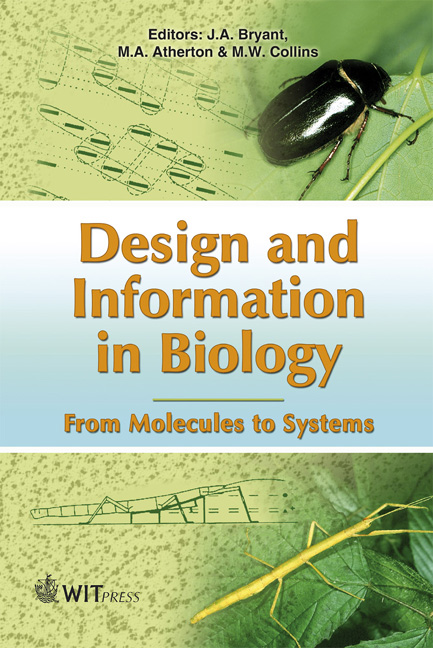The Palm – A Model For Success?
Price
$38.00
Volume
27
Pages
24
Published
2007
Size
1190 kb
Paper DOI
10.2495/978-1-85312-853-0/10
Copyright
WIT Press
Author(s)
A.Windsor-Collins, D. Cutler, M. Atherton & M. Collins
Abstract
Chapter 10 The palm – a model for success? A.Windsor-Collins1, D. Cutler2, M. Atherton1 & M. Collins1 1School of Engineering and Design, Brunel University, Uxbridge, Middlesex, UK. 2Royal Botanic Gardens, Kew, UK. Abstract The tree palm provides us with an unusual example of where evolution seems to bring about a reduction in macro structure complexity resulting in a long-lived but not necessarily structurally efficient living system ‘design’. The biological background to these durable and successful plants in terms of evolution has been investigated and the results are related to engineering design. The botanical design rationale is essentially survival, not infrequently in harsh weather conditions, and reproduction. More specifically, the mechanisms of the palm functions described offer potential for interpretation in engineering terms. Thus, the structure and features of the palm are discussed in general terms followed by the more detailed thermofluid aspects of the leaf. 1 Introduction Palms can take many different forms and although they are specialised, their morphology can vary greatly. For ease of reference and purposes of this chapter, the palm shall be divided broadly into three principal areas: the root, the trunk/stem and the crown. Palms derive from a monophyletic group of plants, meaning that they share a single common ancestor. They constitute a family of about 200 genera and 2600 species [1] and they belong to the family commonly named Palmae, but correctly known as Arecaceae. The double coconut (Lodoicea) produces the heaviest seed, which may be up to 20 kg in weight [2]. The fruit has an outer layer of tough, fleshy, fibrous material which protects it from predators and enables the seed to float on the water (one of the methods of seed dispersal). The seed takes about a year to germinate and about another year to form its first leaf. Palms can be found in rainforests, in the under-storey region of forests, at mid-canopy level and in the canopy itself as well as in the mangroves, mountain forest, the desert (e.g. Washingtonia) and river banks making them the most ecologically diverse family of plants [3]. Palms are adapted to a diverse range of environments. However, palms do not match the diversity of form found in dicotyledons (dicots). A large percentage of palms follow the same model in that they have simple flexible stems. Two-thirds of this family are associated with rainforests of Central and
Keywords





